Let the kids run free – nature can handle it
Last weekend I took my daughter and her best friend to a forest close by where my parents used to take me all the time. I have so many memories of running through the forest, climbing trees, playing in the creek, and – of course – falling into the creek. I cannot count how many happy hours I spent in this forest, so I thought after a year of lockdowns and homeschooling, I would take the girls there and spend a great afternoon.
When we got there, it was raining, but my daughter and her friend were so excited to get out. We went down to the creek and they started play in the water, going deeper and deeper until my daughter was the first one to get wet feet in her rain boots. 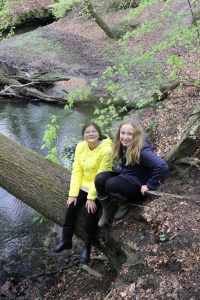 They found a nice slope to climb, trees to balance on over the water, and started to follow the creek. I knew that the path was following the small river for a bit, would take a little arc and then meet it again, so after walking with them for a while, I told them to keep going and I would meet them further down. I knew there was no danger, as I had gone this way many times myself as a child.
They found a nice slope to climb, trees to balance on over the water, and started to follow the creek. I knew that the path was following the small river for a bit, would take a little arc and then meet it again, so after walking with them for a while, I told them to keep going and I would meet them further down. I knew there was no danger, as I had gone this way many times myself as a child.
While I was walking down the trail, I could hear the girls laughing and sometimes squealing with joy in the distance – those must have been the moments they fell and got wet (they later told me that one time the water got so deep that they were in it up to their chest…). I was so happy to hear them and to know that after weeks of studying and screens, they were in their happy place outdoors, exercising, breathing fresh air, and enjoying themselves to the fullest.
A woman passed me by, and with a very distressed look on her face, she told me: “They have to be quiet; they are scaring the animals. And don’t you know you have to stay on the trail?” Out of reflex I apologized to her and said I would tell them when they would turn the corner, and so I did – at least I told them they should not scream that loud, even if the water was cold. But was that the right thing to do?

This got me thinking – what is more important? Protecting nature by not touching it, or having children immersed in nature, touching, feeling, and loving it? Who was right here? Me, the mother happy to get her kids away from screens and seeing them having this great experience in nature or the hiker who was worried about the peace and quiet of nature and its inhabitants?
The answer I found for myself is somewhere in the middle, I guess…
There is a huge need to protect nature, there is no doubt about that. But protection goes much beyond just the concept of leave no trace. Issues like climate change, the loss of biodiversity, and habitats need much broader action, and we need the next generation on board with this. But to protect something, you need to know it, you need to have a clear vision and not only an abstract concept of it. If we don’t allow children to touch and experience nature the way we still had the chance to, how can we expect them to develop this profound love for the environment that we need them to have? If children lose contact with nature, they won´t fight for it.
Related: Teaching Children how to be environmentalists
There are also countless benefits for children in outdoor play and exploration. Spending time outdoors can help with their vision, their brain development, their general wellbeing – the examples are countless. But it is not only important that they spend time outdoors, it’s how they spend it and with whom. Being unsupervised, with other peers and on their own is super important. That is when they develop problem-solving skills, learn to interact with others, and push their creativity.
Related: 5 ways outdoor play benefits your children
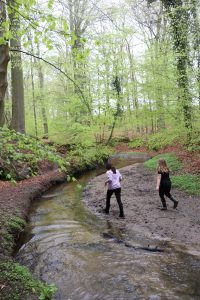
Letting the kids run free as a parent can be the most difficult thing to allow, but one of the most beneficial things for them as well. And to be honest, when you think back to your own childhood, aren’t those moments when you were alone with your friends, building a fort, a treehouse, or playing in a river the best? Aren’t those the ones that stick with you forever?
But the fear of some people is, that kids are going to alter and manipulate nature too much when they interact with it. That they will change the creek too much when they build a dam, that they will kill the trees when they cut off their branches, and that they will harm insects and small animals when they pick them up to observe and touch them.
To finish the story from last week, I am sure that the hour that my daughter and her friend spent alone in that creek created amazing memories for them. When they met me again, I could see their eyes sparkle – they had so much fun, but they also conquered something on their own. They had to get through and over barricades along the way, they cooperated to be able to do so, and they succeeded while feeling secure enough because I was never far gone. The ego push they got from this is going to last a while. And the positive memories they made on that afternoon are going to carry them for a long time – and they immediately asked me to go back next weekend! In an age where we talk about nothing else than kids and screens, those two (pre-) teenagers asked me to take them to the forest – shouldn’t that be exactly what we want to achieve?

I am sure they also made a lot of noise and scared away some animals. They crushed many branches and surely made some small sandbanks collapse when they crossed them. Probably they tore out some small plants when they climbed the cliff. And maybe they stepped on some snails or shells on the way.
So, I guess the question is, can nature handle kids running free?
I think it can, and I think we have to make room for more opportunities for kids to do exactly this. Nature is not a museum, it is a living and growing organism, and kids are part of it. The importance of nature for their development, but also the importance of their connection to nature for the persistence of our planet is more important right now. As Katherine Martinko wrote in Treehugger: A few squashed, over-handled, or neglected critters are a small price to pay for adults who value the wonders and beauty of nature and will return to these childhood memories when deciding whether to vote for a conservation measure.
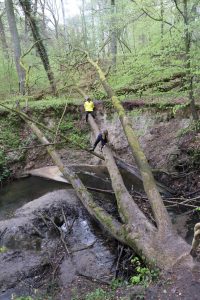 Of course, there are some areas that are delicate and need more protection. And of course, we need to teach children from an early age that they have to respect nature and all its creatures. But there should also be areas where kids can explore, run wild and interact with nature without an adult telling them what to do and how to do it.
Of course, there are some areas that are delicate and need more protection. And of course, we need to teach children from an early age that they have to respect nature and all its creatures. But there should also be areas where kids can explore, run wild and interact with nature without an adult telling them what to do and how to do it.
In many Scandinavian countries, kids have access to so-called natural play areas where they can play and build forts and bridges and dams as much as they want. Research shows that this definitely leaves an impact, but at the same time, the areas are still functioning ecosystems, while also having provided children with valuable experiences.
I think it is up to us as parents to provide our children with the framework to be able to make these experiences. Sometimes this means a messy backyard with sticks and rocks for some years, sometimes this means choosing areas to vacation that might not be that spectacular, but accessible for kids. And it definitely means teaching them the skills to make the right decisions in nature – respecting, while still engaging and experiencing.
Did you have similar experiences while letting your kids roam free? What is your opinion on this topic? I am looking forward to discussing this in the comments!
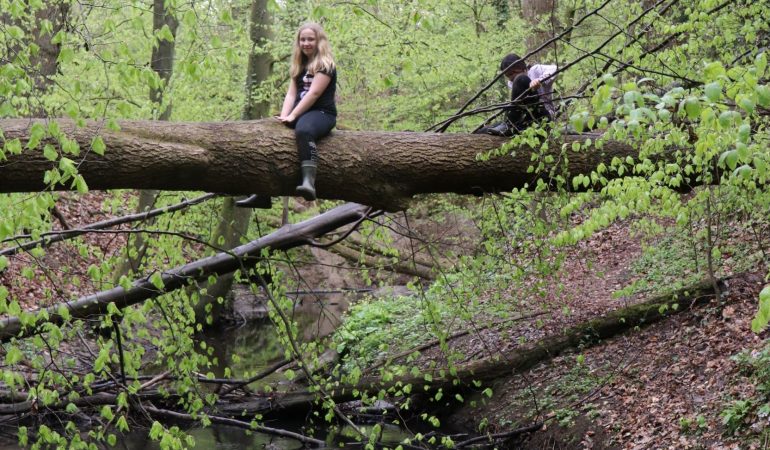
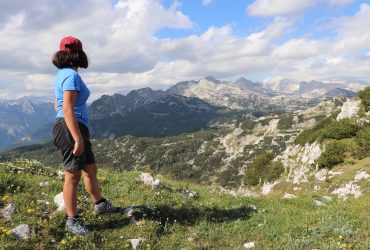
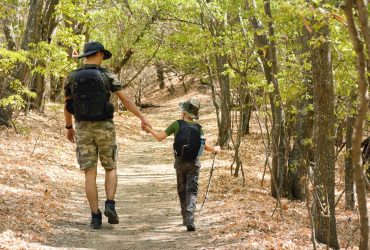
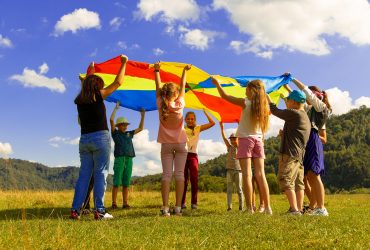
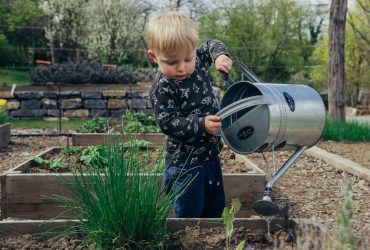
Being outside in nature is so important for kids’ health, mentally, emotionally and physically. Nature truly is the best medicine. After a year of traumatizing pandemic life, they need even more time outside in nature. Kids who spend more time in nature grow up to be healthy, strong, confident adults.
This is so true, thank you for your comment!
In the past, my girls have complained about going on hikes and being in nature. Once they got going though, they had a great time.
Yes, that is something that we also know. But at the moment, my daughter loves to go outside, especially when we can take her friend!